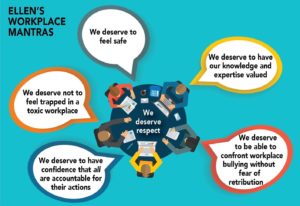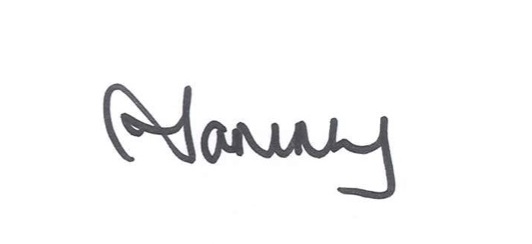
It seems it is increasingly less safe to turn up to work each day. Or maybe we are just getting better at talking about it?
While we do seem to have got a greater handle on the more obvious safety risks (although far too many people still die at work), the psychosocial hazards and risks associated with sexual harassment, bullying, customer violence and aggression have not gone away.
If anything, they seem to be getting more complex, more insidious, more difficult to manage.
Say What?
Recently we’ve heard of the case of real estate agents in Queensland who are sending their property managers to properties armed with body cameras after a property manager was allegedly locked in a house by a tenant against her will.
Research shows that:
- at least 1 in 3 people have been sworn or yelled at work.
- 1 in 5 have been physically assaulted or threatened whilst at work.
- 2 in 5 women and 1 in 4 men experienced sexual harassment in the workplace over the past five years, and
- that as many as 2.5 million workers are expected to be bullied in their working lives and 350,000 have experienced long term bullying.
That’s a whole lot of people being affected by negative experiences in the workplace.
What about the cost? $30b per year and counting…
When we talk about the cost of bullying and harassment, the usual figure that’s quoted is between $6b and $36b (a somewhat large range in my view). But read on for why that figure is out of date and does not accurately represent the true cost of bullying and harassment in the workplace.
The ‘hidden’ costs dimensions of workplace violence, which Sheehan et al understood as having potentially far greater economic consequences,4 have largely been ignored by both researchers and policy makers.Back in 2000, after identifying and including some of the ‘hidden’ costs of workplace violence and relying on estimates at that time of claimed workplace bullying prevalence rates in Europe and the United States, Sheehan et al attempted to quantify the cost to Australia of workplace bullying. They assumed both a (conservative) bullying prevalence rate of 3.5 per cent and a higher prevalence rate of 15 per cent to calculate a range of indicative costs in Australia, in 2001.5Assuming those rates, they estimated the annual cost to Australian employers of workplace bullying to be between $6 billion and $36 billion.In the ensuing decades, on any measure, the estimated cost of workplace violence to the Australian economy must have soared. However, the (original) annual costs estimate of $6 billion–$36 billion has simply languished, unchallenged. This redundant estimation has repeatedly been advanced by successive Australian governments, as gospel.6The 2001 estimated cost figure is still, more than 20 years on, relied upon and cited. It is commonly reiterated by the Australian government, with the Productivity Commission typically referenced as the official source of truth.7This is true despite inflation, a significant increase in the cost of living since 2001, and the reality that Sheehan et al only ever intended that their paper provide an initial and ‘conservative’ assessment of the range of costs of workplace violence.8They also noted that some impacts could not be costed (at the time) and so were not considered in their costs calculations. Significantly too, the costs of sexual harassment as a form of workplace violence were not contemplated by Sheehan et al in 2001.In 2018, Deloitte Access Economics found that workplace sexual harassment alone cost the Australian economy an estimated $3.8 billion.9The minimum annual cost of workplace violence (excluding sexual harassment) is now likely at least $30 billion. The government needs to take definitive steps to ensure that the true costs and wide-ranging impacts of this injurious phenomenon are properly measured in monetary terms. It also needs to ensure that proper transparent and public reporting is mandated along with initiating the development of a better public policy approach to the prevention and effective management of workplace violence.
Ballard, A., & Bozin, D. (2023). The true (financial) costs of workplace violence in Australia. Alternative Law Journal, 48(3), 191–196.
Wowers! Imagine what we, as a country could do with a spare $33.8 billion dollars?!?
It’s a spectrum of experiences
Violence or aggression in the workplace is often seen as an inescapable part of customer facing roles in retail/health and hospitality.
Sexual harassment ranges from the tedious and unpleasant to the illegal; from the constant jokes and innuendo to sexual assault and rape.
Bullying is often insidious, under the radar, behind closed doors, or is a series of micro aggressions that in and of themselves might be brushed off but taken together can be devastating.
For those that haven’t experienced sustained harassment or bullying, there can be a “toughen up princess” type approach; a sense that everyone is a little too precious these days. That if you can’t handle the heat, you should get out of the kitchen and all that. That she was asking for it, that she went along with it, that she flirted and brought it on herself.
The Takeaway
The impact of sexual harassment, bullying and violence in the moment can be difficult, to say the least – resulting in physical and mental distress. However, it’s the longer-term impact that often goes unnoticed and unreported. Sadly, if you scratch below the surface, there is story after story of lives and careers stalled or destroyed, mental distress including suicidal ideation and a general lack of trust and safety.
Not only do those experiences sit with the people affected, but they also flow into new employment relationships. It’s what makes harassment and bullying so treacherous – it often doesn’t stop with the incident but continues to impact for years beyond.
Legislation continues to catch up with the reality of modern workplaces. The Fair Work Commission has amended the Fair Work Act around bullying and harassment over recent years. The Sex Discrimination Act was been amended to provide a new positive duty. It imposes a legal obligation on organisations and businesses to take proactive and meaningful action to prevent relevant unlawful conduct from occurring in the workplace or in connection to work.
But we still have a long way to go.
If you’re reading this as an employer or a leader in an organisation – ask yourself what you are doing (beyond the superficial) to genuinely address violence, aggression, harassment, bullying and sexual harassment in your workplace. And if you’re not doing anything beyond the superficial, ask yourself what’s the cost. To you. To your employees. To society at large.
More Resources
Fair Work Commission – Stop Bullying Orders
Making a complaint to WorkSafe WA
Tools and information on bullying – Worksafe WA
The true (financial) costs of workplace violence in Australia
Want more?
If the above has whetted your appetite, and you’re keen for more.. Here are some ideas:
Does leadership interest you? You can sign up to my FREE seven day “Be a Better Boss Challenge” by clicking here. And you can click here to buy my book.
Want to chat? Click here to get in touch.
Want some help in meeting your goals? Sign up to the permission to dream programme, by clicking here.
Want more to read? You can read any of the 300+ blog posts on this site, by clicking here.
See you soon,


